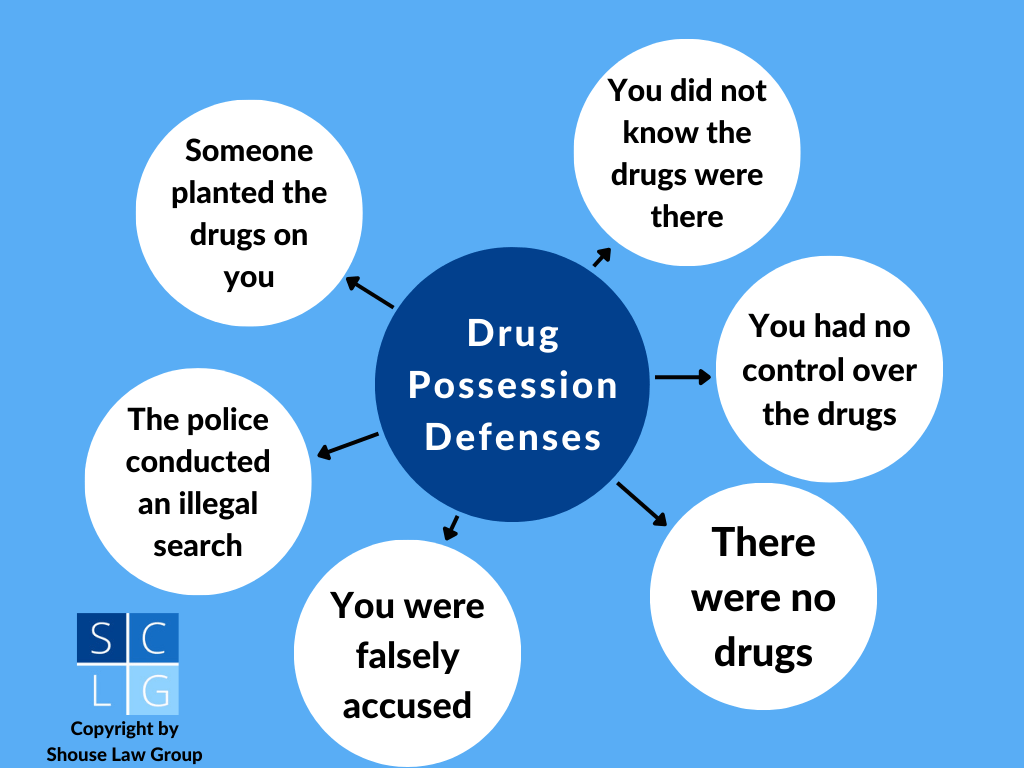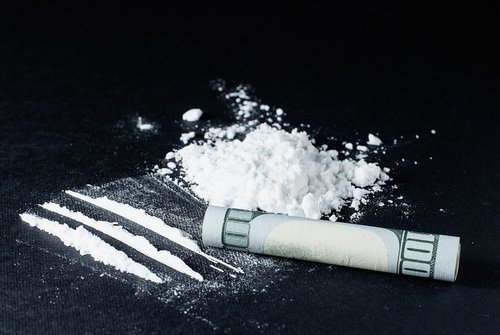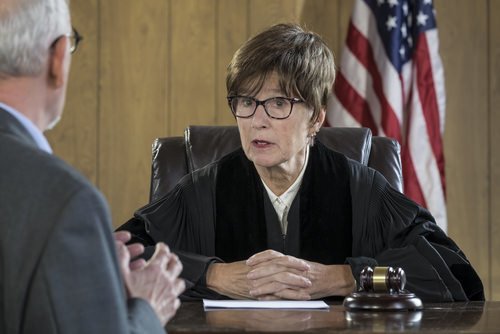
California Health and Safety Code § 11350(a) HS makes it a misdemeanor offense to be in the unlawful possession of a controlled substance, which includes both (a) street narcotics and (b) legal prescription drugs without a valid prescription.
11350(a) HS is often referred to as
- “simple possession” or
- “possession for personal use.”
Most drug possession charges in California get dismissed by successfully completing a
Otherwise, a conviction carries standard misdemeanor penalties:
| HS 11350(a) sentence in California |
|
| Fine | Up to $1,000 |
| Incarceration | Up to 1 year in jail or summary probation |
Examples of simple possession
- Going to a concert with a baggie of cocaine or hallucinogens in a backpack.
- Driving to a friend’s house with the opiate Vicodin in the glove box.
- Walking to the neighborhood park with a bundle of heroin or amphetamines in your pocket
Defenses to simple possession charges
- You did not “possess” a drug,
- You had a valid prescription for the substance, and/or
- You were arrested after an unlawful search and seizure.
The following bubble graph shows common strategies for fighting possession charges.

Below our California criminal defense attorneys explain what you need to know about the crime of drug possession. Click on a topic to jump to that section.
- 1. Definition
- 2. Defenses
- 3. Penalties
- 4. Immigration consequences
- 5. Expungements
- 6. Gun rights
- 7. Related crimes
- Additional resources

It is a crime for you to: possess a certain controlled substance, and to do so without a valid prescription.
1. Definition
The general definition of possession of a controlled substance is having under your control a drug that has been made illegal by state or federal law and for which you do not have a valid prescription. This is a crime under Health and Safety Code 11350 HS.1
A prosecutor must prove five elements to convict you of possession of a controlled substance:
- you possessed a controlled substance,
- you did not have a prescription for the substance,
- you knew of the substance’s presence,
- you knew of the substance’s nature as a controlled substance, and
- the controlled substance was in a usable amount.2
A “controlled substance” is a drug or chemical whose manufacture, possession, and use are regulated by the government under the United States Controlled Substances Act.
(Note that neither marijuana nor stimulants are covered by HS 11350. Marijuana is covered by HS 11357. Methamphetamines and other stimulants is covered by HS 11377.)
Possession
You have possession of a substance if you have control over it. You do not actually have to hold or touch something in order to possess it.3
So, for example, you have constructive possession of a drug if it is in your:
- bag (even though it is in a locker or car trunk),
- storage unit, and
- closet.
Note that just because you agree to buy a controlled substance, it does not, by itself, mean that you have control over that substance.4
Also note that two or more people may possess something at the same time.5
Knowledge
To be guilty under HS 11350, you must have knowledge of both:
- the presence of the controlled substance, and
- the fact that the substance is indeed a controlled substance.6
A prosecutor does not have to prove that you knew which specific controlled substance you possessed.7 The D.A. only has to prove that you knew the drug was some type of drug.
Usable amount
A “usable amount” is a quantity that is enough to be used by you as a controlled substance.8
Useless traces (or debris) are not usable amounts of drugs. On the other hand, a usable amount does not have to be enough, in either amount or strength, to intoxicate you.9
Analog of a controlled substance
This statute applies to the possession of “controlled substances” as well as an analog of a controlled substance.10
An analog of a controlled substance either:
- has a chemical structure substantially similar to the structure of a controlled substance, or
- affects the central nervous system substantially similar to or greater than the effect of a controlled substance.11

There are multiple legal defenses to charges of violating Health and Safety Code 11350(a) HS.
2. Defenses
Three common defenses to HS 11350 accusations are:
- no possession,
- lawful prescription, and/or
- unlawful search and seizure.
No possession
You are guilty under this code section only if you actually “possessed” a drug. This means it is a legal defense for you to show that you were never in constructive or actual possession of the drug.
Lawful prescription
You are not liable under this law if you had a valid, written prescription for a controlled substance from a licensed:
- physician,
- dentist,
- podiatrist, or
- veterinarian.12
The prosecutor has the burden of proving beyond a reasonable doubt that you did not have a valid prescription.
Unlawful Search and Seizure
The Fourth Amendment to the U.S. Constitution declares that you have the right to be free from unreasonable “searches and seizures” by law enforcement officers. If authorities obtain evidence from an unreasonable, or unlawful search and seizure, then that evidence can be excluded from your criminal case. This means that any drug charges could get reduced or even dismissed.
3. Penalties
Under California drug sentencing guidelines, most instances of simple drug possession (for personal use) get charged as misdemeanors rather than felonies.
The crime is punishable by:
- imprisonment in county jail for up to one year, and/or
- a maximum fine of $1,000.
In certain circumstances, illegal possession of narcotics can be prosecuted as a felony. These include if you had a prior conviction for a sex crime or a serious felony. A felony conviction can be punished by up to three years in county jail.
In some unlawful possession cases, you may qualify for a drug diversion (treatment) program or drug court. These programs allow you – if you committed a non-violent drug possession offense – to serve your sentence in a drug treatment program instead of jail or prison.
Note that the L.A. County D.A.’s office generally does not prosecute HS 11350 cases.13
Learn more in our article on California drug sentencing guidelines.
4. Immigration consequences
A conviction for drug possession may have negative immigration consequences.14 For a more detailed discussion, see our article on the immigration consequences of drug crime convictions.
5. Expungements
Once you have successfully completed probation for the possession of a controlled substance, or serving a jail term for the same, you can try to get the offense expunged from your criminal records.
Under Penal Code 1203.4, an expungement releases you from virtually “all penalties and disabilities” arising out of the conviction.15
6. Gun rights
A felony conviction under HS 11350 will strip you of your gun rights.
7. Related crimes
Possession of a controlled substance for sale – HS 11351
California Health and Safety Code 11351 HS makes it a felony to possess certain controlled substances in order to sell them.
Note that, in comparison to this law, you will be guilty under HS 11350 if you have no intent to sell the substance.
Sale and transportation of controlled substances – HS 11352
Health and Safety Code 11352 HS prohibits:
- selling drugs,
- transporting controlled substances with the intent to sell them,
- furnishing or administering drugs to other people,
- giving controlled substances away, or
- offering to do any of the above acts.
The reach of this statute is much broader than both HS 11350 and HS 11351.
Under the influence of a controlled substance – HS 11550
Health and Safety Code 11550 HS is the California statute that makes it a crime for you to be under the influence of a controlled substance or a narcotic drug.
Note that there is no requirement under this law that you possess a drug. The mere fact of being under the influence of the drug is enough for a conviction.
Additional resources
If you are struggling with substance abuse addiction, you can find help here:
- Narcotics Anonymous (NA) – A 12-step program to overcome drug addiction.
- Substance Abuse and Mental Health Service Administration (SAMHSA) – 24/7 treatment referral service.
- Recovery Centers of America – Treatment centers in seven states.
- SMART Recovery – Group therapy for young people struggling with addiction.
- Partnership to End Addiction – Information on how to find drug addiction treatment.
Legal References:
- California Health and Safety Code 11350 HS (“except as otherwise provided in this division, every person who possesses…any controlled substance…unless upon the written prescription of a physician, dentist, podiatrist, or veterinarian licensed to practice in this state, shall be punished by imprisonment in a county jail for not more than one year.”). This law comprises possession of Schedule I drugs, Schedule II drugs, Schedule III drugs, Schedule IV drugs, and Schedule V drugs. See also People v. Mower (2002) 28 Cal.4th 457.
- CALCRIM No. 2304 – Simple Possession of Controlled Substance. Judicial Council of California Criminal Jury Instructions (2017 edition). See also People v. Palaschak (1995) 9 Cal.4th 1236.
- CALCRIM No. 2304. See also People v. Barnes (1997) 57 Cal.App.4th 552; People v. Piper (1971) 19 Cal.App.3d 248.
- See same.
- See same.
- CALCRIM No. 2304. See also People v. Horn (1960) 187 Cal.App.2d 68.
- See same.
- CALCRIM No. 2304. See also People v. Rubacalba (1993) 6 Cal.4th 62.
- See same.
- CALCRIM No. 2304.
- See same. See also People v. Davis (2013) 57 Cal.4th 353.
- California Health and Safety Code 11350 HS.
- See same; LADA Special Directive 20-07.
- See INA 237 (a) (2) (A).
- California Penal Code 1203.4 PC.
- See same.
